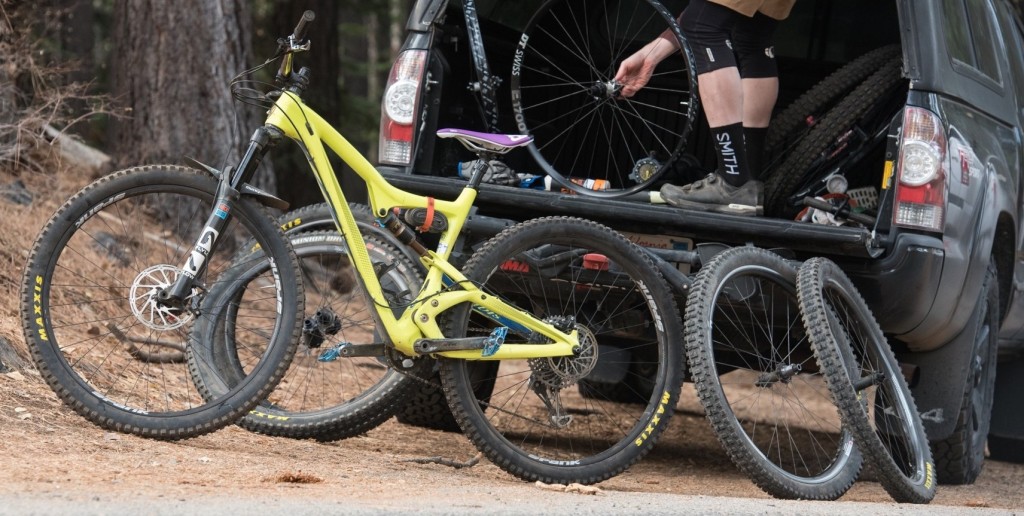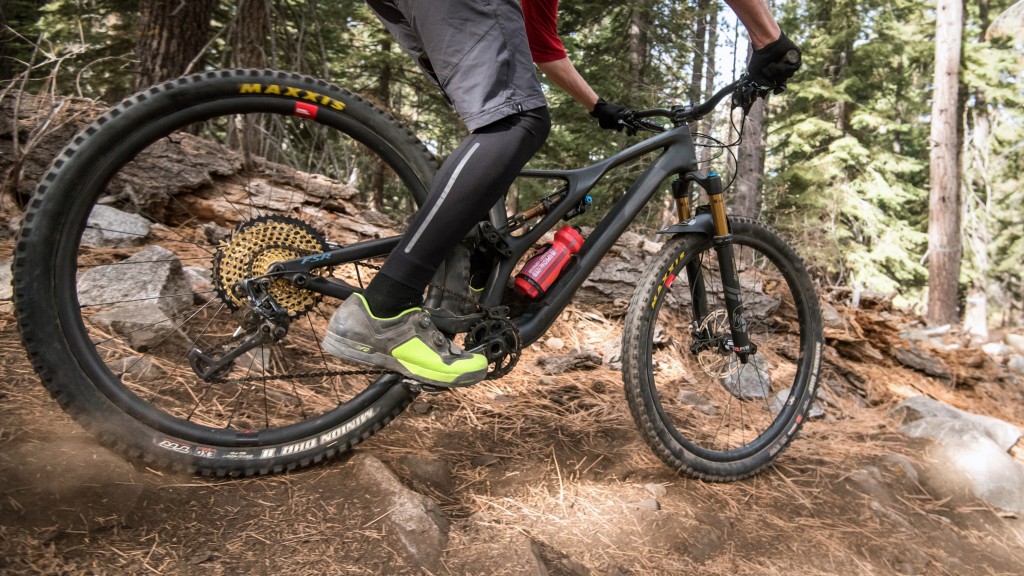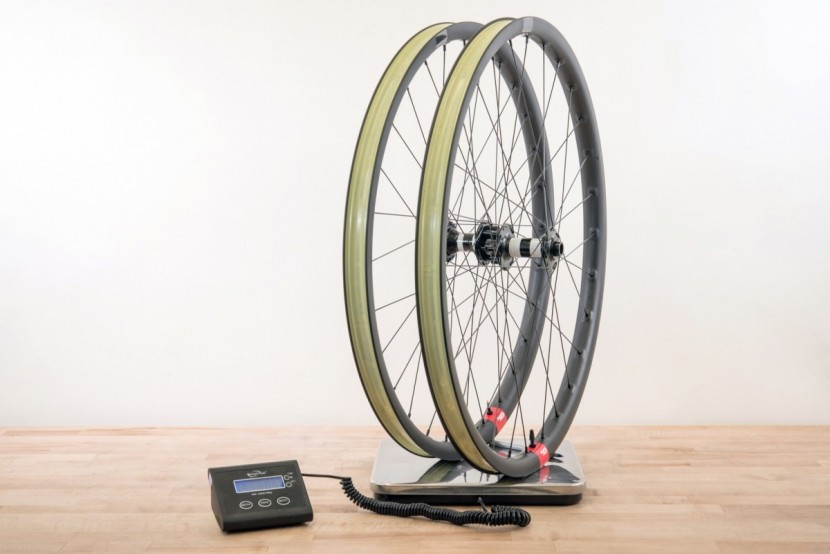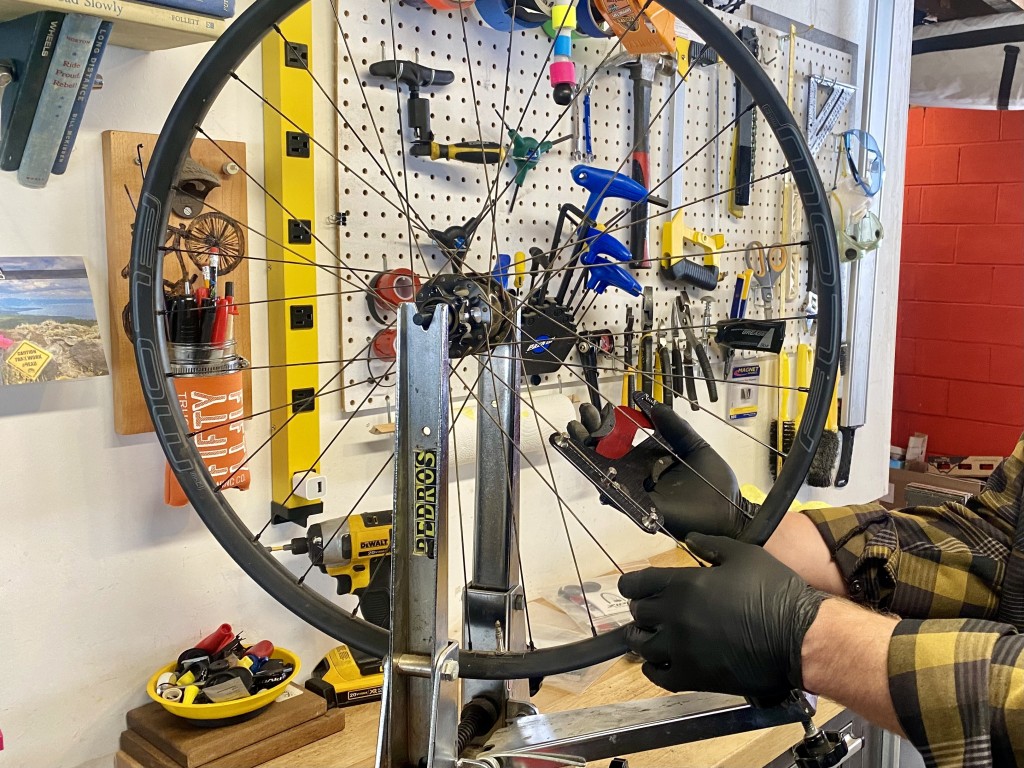Over the course of several months, our team of professional mountain bike testers rode each set of wheels in this review for hundreds of miles. We swapped wheels often for comparison and took detailed notes on each model's performance characteristics. To level the playing field, all of the wheels tested were in the 29" wheel size with boost spacing, 15 x 110 in the front and 12 x 148 in the rear. Each wheelset was mounted with the same exact tire combination, a 29" x 2.5" Maxxis Minion WT DHF EXO Protection in the front and a 29" x 2.4" Maxxis Minion WT DHR II EXO Protection in the rear. Tires were weighed for consistency before installation, and sealant was doled out at 4 ounces per tire. Testers used their own personal bikes for familiarity and additional consistency.
Ride Quality
To test the ride quality of the various models, we rode each one of them a lot. Each of our testers took each wheelset for 4-5 rides ranging in length from 15-25 miles. During those rides, we went out of our way to focus on the performance of each model while climbing, descending, cornering, and smashing through rock gardens. We also considered each set's design, weight, and freehub engagement and how they relate to on-trail performance. After testing each model, we took detailed notes on their performance and discussed their strengths and weaknesses. We also switched between models frequently for direct comparisons.
Freehub Engagement
In addition to the specifications provided, we tested the freehub engagement of each model by riding each wheelset. The differences are quite noticeable and very easy to detect, especially when going from coasting to pedaling or making short ratcheting pedal strokes through technical uphill sections of trail. Freehubs with more lag result in more chain slap, clunking noises, and a generally lower performance feel.
Weight
The weight of each model was determined by weighing the wheelset as it would be ridden with tubeless rim tape and valve stems installed. All of the wheelsets were weighed on the same scales for consistency. While riding, we also considered the feel of each wheelset and how their weight affected the ride quality. Some of the wheels felt lighter than their gram count would have suggested. Some felt lethargic and accelerated slower.
Durability
We tested the durability of all the wheelsets by riding them hard as if they were our own. We didn't treat them gently; we registered the warranties and railed these wheels. We deliberately chose rocky and rough trails to maximize deflection. We ran tires at pressures low enough to evaluate the strength of the rims. We ran test laps frequently and ensured each wheel received the same level of punishment. After each ride, we carefully inspected the wheels for damage, ensuring they remained true, round, and dished. We checked the rims for dents or cracks and the spokes for tension. We checked the hubs for play and inspected them for dust and water ingress. We recorded the spoke tension of every spoke before testing and again at the end of testing to check relative spoke tension and also capture the changes to the tension that our testing and abuse had caused. Wheels that don't have uniform relative tension or that lose considerable tension through our testing period are considered less durable.
When our testing period ended, we compiled all of our notes, discussed each model's attributes and performance characteristics, and rated each one based on the metrics described above. The total scores led us to our best overall, best buy, and top pick award winners.




